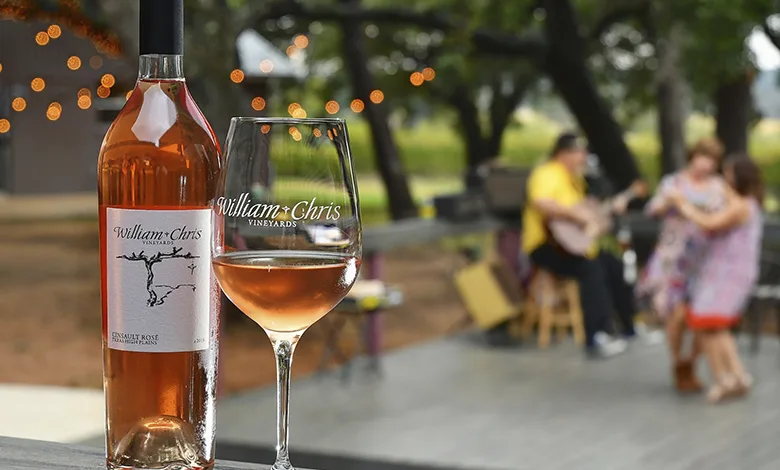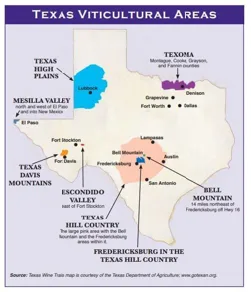
Texas offers wide-open spaces, some serious barbecue, and a vibrant wine scene.
While the West Coast gets all the accolades, don’t underestimate the Texas wine industry, which thrives on innovation, hospitality, and just plain fun.
North America’s first planted vineyard
Spanish missionaries brought the first “mission” grapevines to Texas. Per the Texas Wine & Grape Growers Association, Texas claims the first planted vineyard site in North America in 1662. Today, 443 wine producers and 1,474 acres of vineyards contribute over $20 billion in economic benefit to the state.
Natural wine potential
From the rolling hills and granite soils of the iconic Texas Hill Country to the high-altitude vineyards of the Davis Mountains, each region boasts its unique terroir and wines.
Texas produces many appealing wine styles from 45 varieties, like Sauvignon Blanc, Picpoul, Tempranillo, and Aglianico.
Wine innovation leader
Pushing boundaries, Texas wineries experiment with unusual grapes. The Spanish grape Tempranillo has adapted well and produces savory red wines.
Mourvèdre, known for its peppery spice, thrives in the Hill Country.
Look for innovative blends where winemakers showcase their creativity.
Loving wine and the land
Texas winemakers are passionate and committed to innovation and technology in caring for the land.
They employ sustainable practices such as water conservation techniques and organic and biodynamic farming to ensure a healthy future.
With the growing agri-tourism trend, wineries offer stunning settings, delicious food, and enticing experiences that draw visitors back.

Texas 8 American Viticultural Areas
Each American Viticultural Area (AVA) offers something different.
Many wineries offer tastings, tours, and events where you can meet the people behind the wine.
Mesilla Valley
(Est. 1985) Neighboring New Mexico, the first Texas AVA is also the only multi-state AVA in Texas. Look for Zin Valley Vineyards Merlot.
Bell Mountain
(Est. 1986) Texas’s first single-state AVA encompasses only five square miles within the Texas Hill Country AVA and focuses on Bordeaux varietals.
Fredericksburg in the Texas Hill Country
(Est. 1988) A top tourist destination, this AVA sits between Austin and San Antonio.
The climate and soils here are perfect for growing grapes. Try William Chris Vineyards for Mourvèdre.
Texas Hill Country
(Est. 1991) Including both Fredericksburg and Bell Mountain, it is the third-largest AVA in the U.S.
Over 100 wineries craft everything from Italian varieties to Bordeaux blends.
Escondido Valley
(Est.1992) This arid, high-altitude region is another ideal location for grape growing and is known for its white grapes.
Texas High Plains
(Est. 1993) The second largest AVA in the state produces most of the grapes. With an arid climate and cool nights, grapes as diverse as Viognier and Cabernet Sauvignon thrive here.
Llano Estacado Winery
This winery makes a wide range, including sparkling, dry, and sweet wines.
Texas Davis Mountains
(Est. 1998) Known as the “Texas Alps,” this AVA has the highest elevation and the coolest climate. Look for Alta Marfa and Sharp Family Vineyards.
Texoma
(Est. 2005) Lying on the Texas-Oklahoma border, its moderate climate supports a variety of grapes. With 30 wineries and growing, plus being so close to Dallas-Fort Worth, this area is easy and fun to explore.
Drink Texas wines
In the Dallas area, you can visit one of Landon Winery’s six tasting rooms to savor their wines from around the state.
You can also purchase Texas wines directly or through local stores.
Make sure the bottle bears the “Texas Wine” label for authenticity.
Enjoy the diverse offerings, innovative spirit, and vibrant community of the Lone Star State’s robust wine scene!





